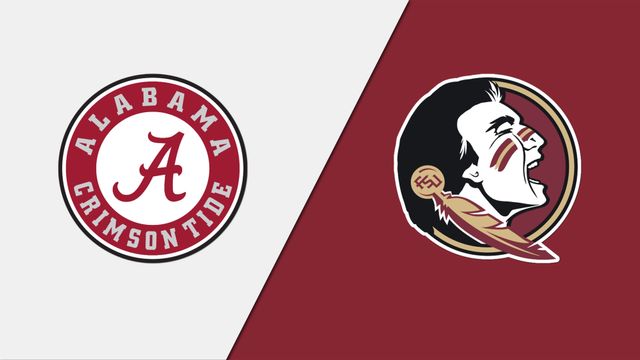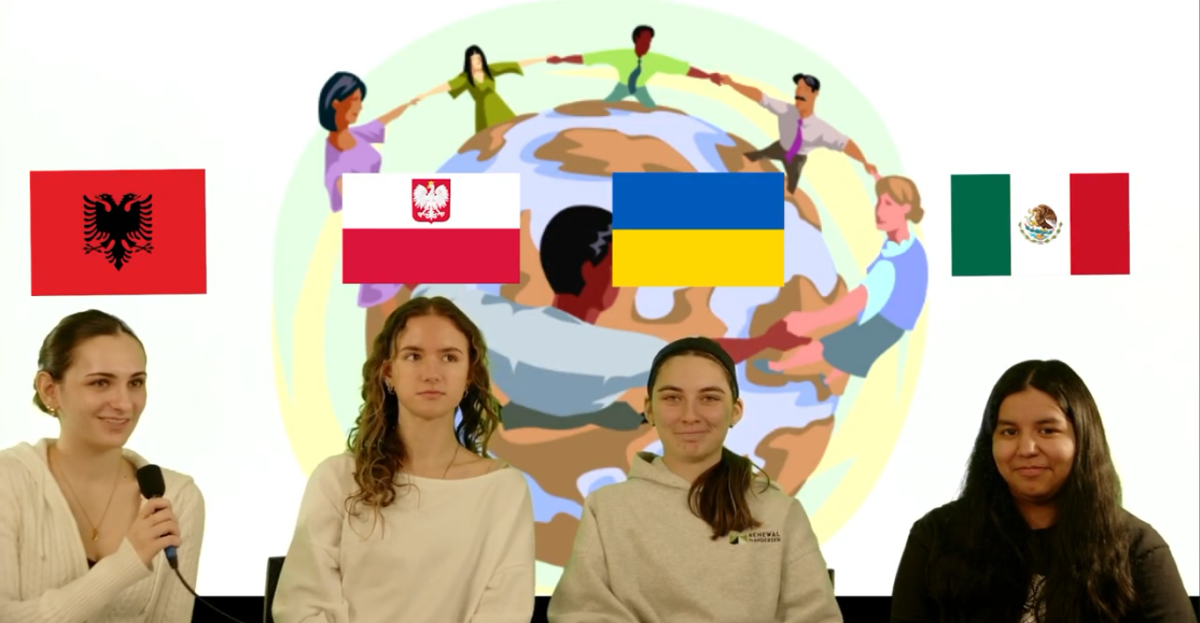The earliest Easter celebrations date back to parts from within Western and Northern Europe, primarily among Germanic and Anglo-Saxon tribes. There were early spring festivals associated with the vernal equinox that honored fertility, rebirth, and renewal in the land along with natural themes related to changing seasons.
Religion: Early Christian Adaptation
Although it is known today as the celebration of the resurrection of Jesus Christ, the beginnings of Easter are a deep mixture of ancient pagan rituals and early Christian adaptation. The roots of Easter date all the way back to 325CE–1,700 years ago. In its earliest form, what eventually was Easter was closely related to the Jewish Passover festival (Pesach). This is important because Jesus was crucified during the time of Passover, and the majority of early Christians were Jewish. The Passover commemorates the Israelites’ freedom from slavery in Egypt and the escape from death. The themes of deliverance and new life are central to early Christian theology.
The first official formalization of Easter was led by a council known as the First Council of Nicaea. After his conversion to Christianity, Emperor Constastine sought to unify Christian practices throughout the Roman Empire. The Council declared that Easter would be celebrated on the first Sunday after the first full moon after the vernal equinox (approximately March 21), guaranteeing that it would always be celebrated in spring and would separate it from the Jewish Passover calendar. This made it clear that Easter would be a movable feast in the Christian liturgical year.
Religion: Modernized Christianity
Today, Easter is still considered the primary religious holiday in Christianity, representing the resurrection of Jesus Christ and the promise of everlasting life. Churches across the world have special services in celebration, such as a Sunrise Service, Holy Week observance (Maundy Thursday, Good Friday, etc.), and Easter Sunday Mass. Good Friday is solemn, and Easter Sunday typically includes jubilant hymns, flowers, etc., with the Paschal candle lit in procession.
While the spiritual meaning of Easter is still central to many practicing Christians, especially in Catholic, Orthodox, and Protestant traditions, the holiday has also become highly commercialized and secularized in many parts of the world.
3 Celebratory Activities: Then v.s. Now
Then:
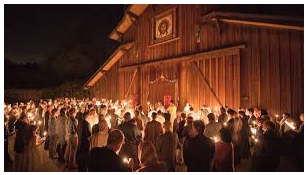
(Orthodox Church)
- Baptisms: Easter was a major time for Baptisms, as new converts were welcomed into the Christian faith.
- Feast after fast: After the long Lenten fast, Easter was a time for celebratory meals, often featuring lamb (symbolic of Christ) and seasonal produce.
- Sunrise Services: The night before Easter, believers would attend a Paschal Vigil, waiting in prayer until dawn to celebrate the resurrection.
Now:
- Easter egg hunts: Group activities specified for mainly children of younger ages.
- Family meals: Easter is often a time for family brunches or dinners, with dishes varying by region and culture (e.g., ham, lamb, sweet breads).
- The Easter Bunny: This folk figure, likely derived from German springtime traditions, delivers eggs and treats and is a major part of children’s celebrations.
Easter’s Expansion
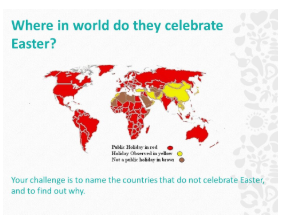
Easter was not widely celebrated in early colonial America, especially in Puritan dominated New England, where strict Protestants rejected many traditional Christian holidays—including Easter—that had too much of an association with Catholicism or paganism.
However, in the 18th century, when more Anglicans, Catholics, and Lutherans settled in Virginia, Maryland, and Pennsylvania, among other places, Easter began to gain a foothold. German immigrants, particularly, introduced Easter customs like egg dyeing and stories of the “Osterhase” (Easter hare), which began the story of the Easter Bunny in the U.S.
- Latin America (1500s–1600s): Introduced by Spanish and Portuguese colonizers, Easter became closely associated with Catholic traditions, including extravagant Holy Week parades, especially in Mexico, Guatemala, and Brazil.
- Australia & New Zealand (1700s–1800s): Brought by British settlers, Easter became part of national Christian observance. Today, it’s both a religious and public holiday, with Easter egg hunts, chocolate bunnies, and a variety of celebrations.
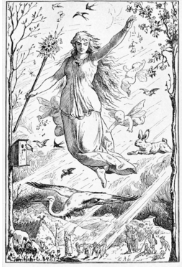
(Library of Congress)
Easter’s name
The goddess Ēostre (or Ostara), a goddess of spring and fertility in Anglo-Saxon paganism, was celebrated. Her name is likely the origin of the English word “Easter.” Feasts were held in her honor and things associated with new life, like eggs, were included in the rituals. There are even some early references tying rabbits to Ēostre—known for their fast reproduction.
Works Cited:
- “The Date of Easter.” Astronomical Applications Department, https://aa.usno.navy.mil/faq/easter. Accessed 23 April 2025.
- Hillerbrand, Hans J. “Easter | Origin, Christianity, Jesus, Traditions, History, Name, Facts, & Dates.” Britannica, https://www.britannica.com/topic/Easter-holiday. Accessed 23 April 2025.
- Travers, Penny, and Johannes Gehrts. “Origin of Easter: From pagan rituals to bunnies and chocolate eggs.” ABC News, 14 April 2017, https://www.abc.net.au/news/2017-04-15/the-origins-of-easter-from-pagan-roots-to-chocolate-eggs/8440134. Accessed 23 April 2025.






